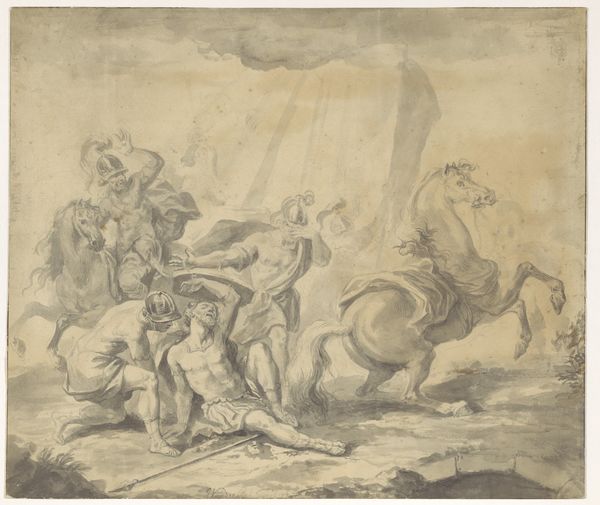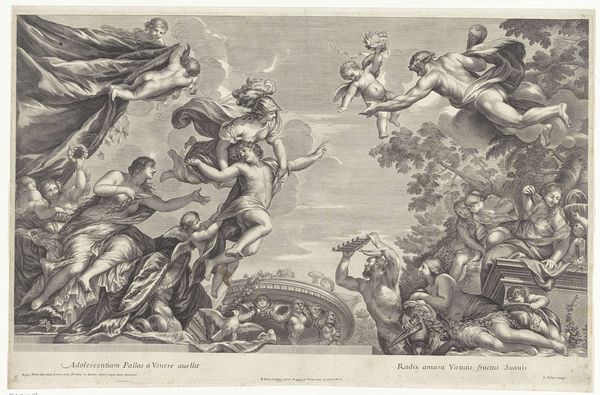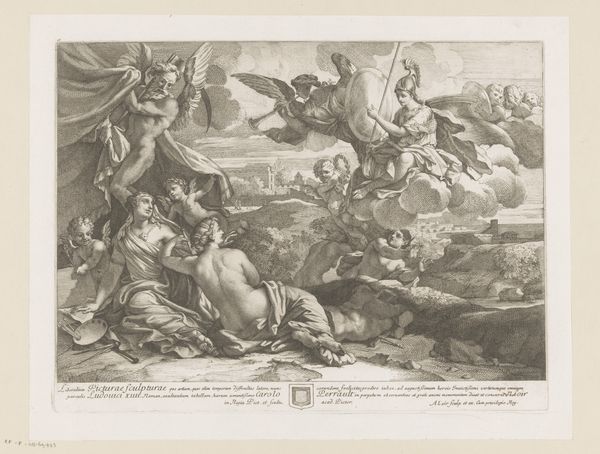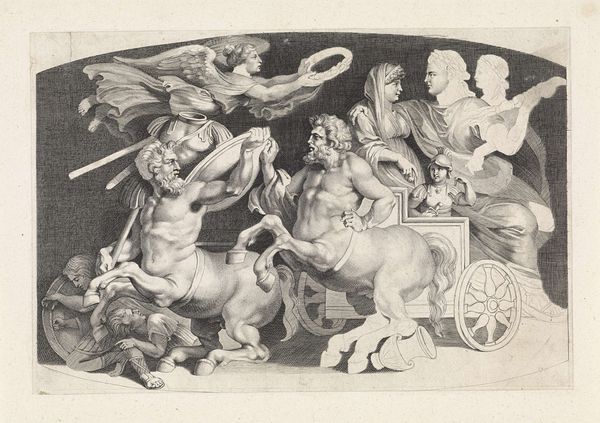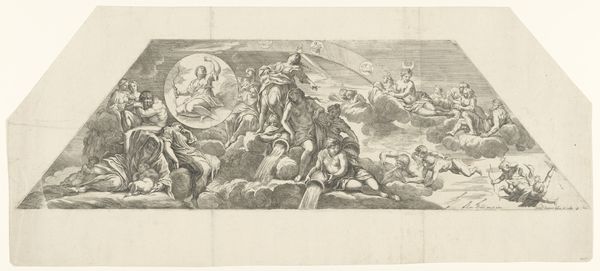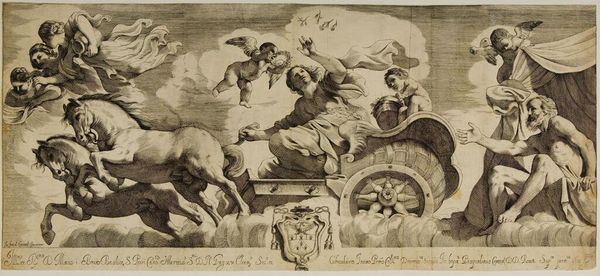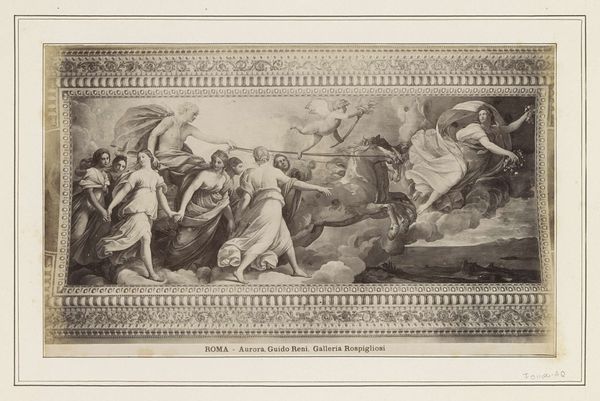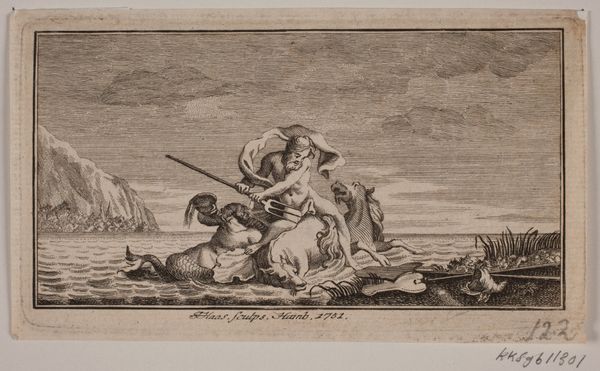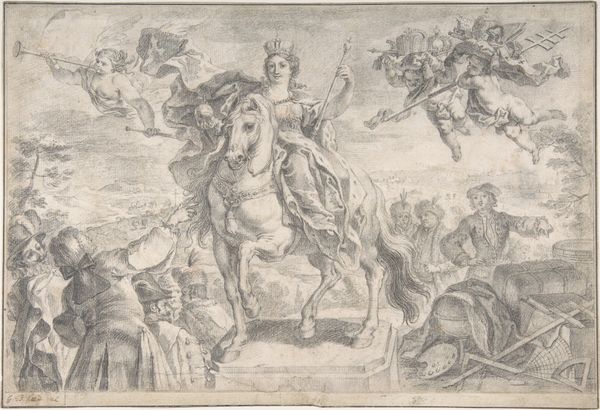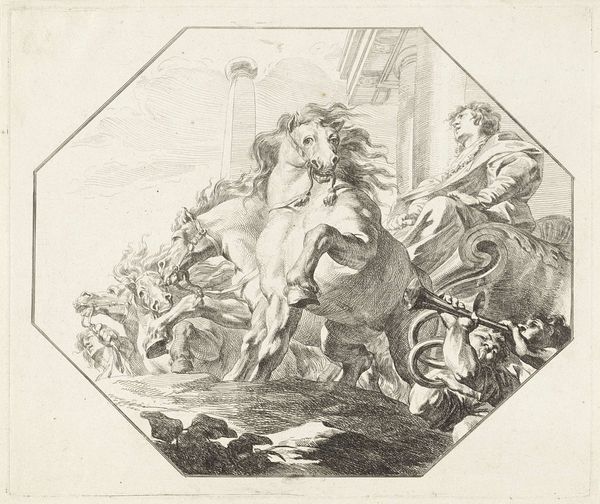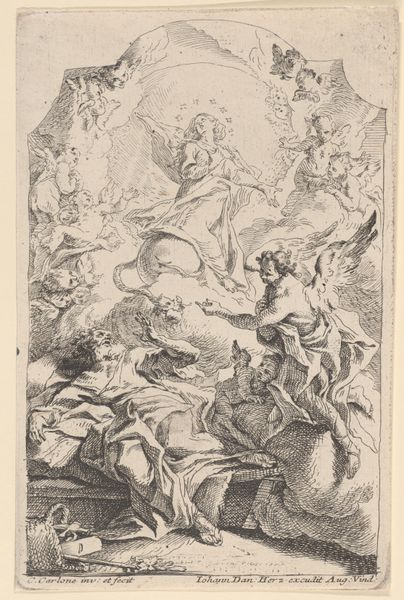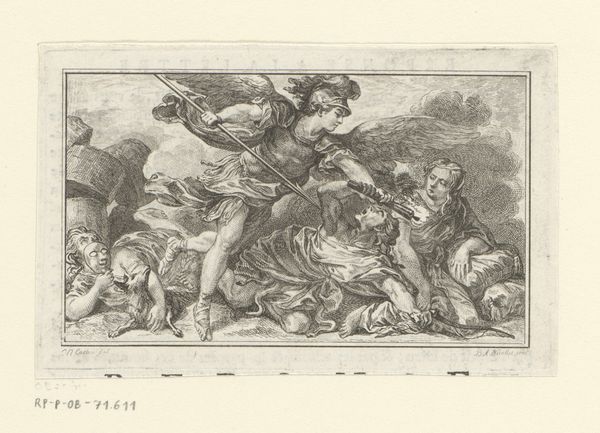
print, engraving
#
allegory
#
baroque
# print
#
history-painting
#
engraving
Dimensions: height 320 mm, width 718 mm
Copyright: Rijks Museum: Open Domain
Giovanni Battista Pasqualini created this print, “Aurora verjaagt de nacht”, sometime in the early 17th century. The image is made by engraving lines into a copper plate, inking it, and then pressing it onto paper. This reproductive process, relatively new at the time, allowed images to be disseminated widely and cheaply. The material influence is clear: every tone and texture is rendered through the precise application of line. Look closely, and you can see the hatching and cross-hatching used to build up areas of shadow, and the delicate stippling that creates soft gradations of light. The artist has really mastered the burin to translate the illusion of flesh, fabric, and atmosphere into a graphic language. Engraving was a skilled craft, demanding years of training and specialized tools. It was also closely tied to the rise of commerce and the circulation of knowledge. Prints like this one brought classical imagery to a broader audience, connecting artistic skill to the burgeoning world of mass media. This piece is a testament to the intricate relationship between art, craft, and the social forces of its time.
Comments
No comments
Be the first to comment and join the conversation on the ultimate creative platform.
